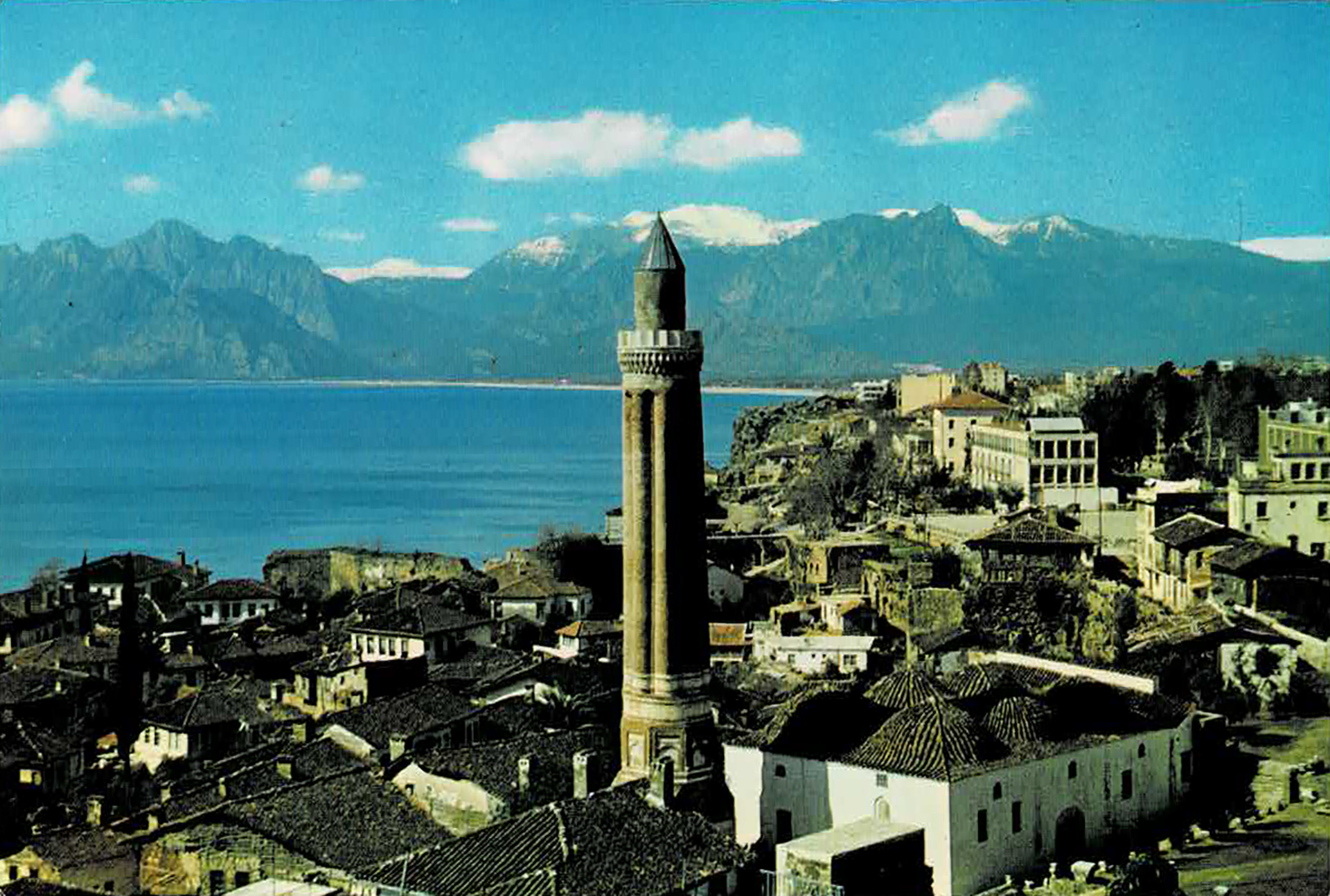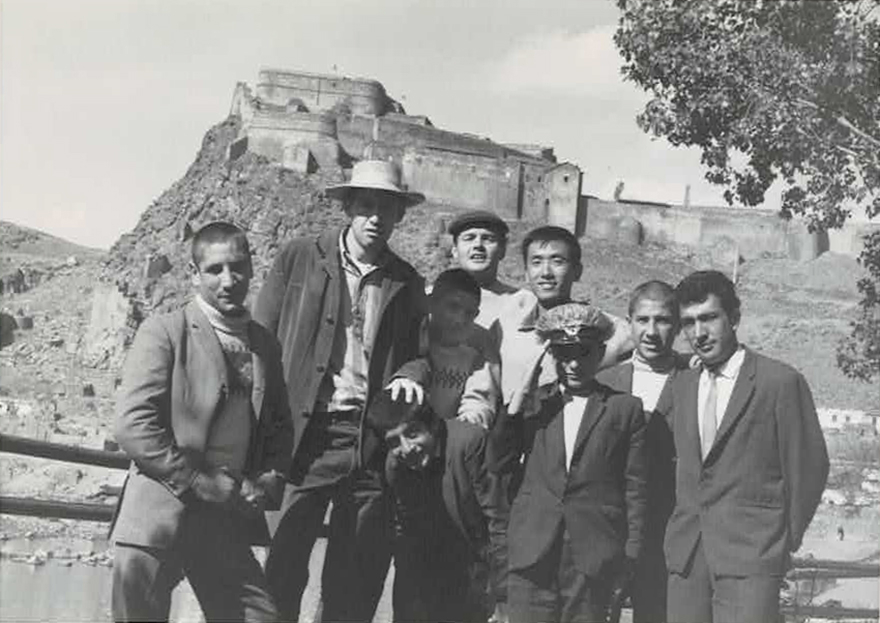What is AIR (Artist-in-Residence)? (1):
The origins of the Youkubo AIR program
By Murata Tatsuhiko

I am delighted to have been given this opportunity by ICA Kyoto to write about our residency program, which I will attempt to do over five installments.
I hope there will be some interesting feedback from those involved in ICA Kyoto’s unique activities.
In this, the first part, I will describe the beginning of my own residency experience and the connections that arose from that time. Our story begins in 1966, when I was studying engineering at university.
After majoring in engineering, I intended to earn a living as an engineer. When I was a student, internships were offered as opportunities to get a sense of what one’s future workplace would be like. In my third year, I did an internship at the Tokyo factory of a certain clock manufacturer that enabled me to learn what it was like to commute to work as a working adult. It was a welcome learning opportunity that also provided me with some spending money and credits. In my graduation year, I learned that there was a large-scale international exchange program that offered internships at factories overseas. At the time, Western countries were popular destinations for internees, but the destination I set my mind on was Turkey, a country that straddles East and West. I was lucky to get the chance to undergo an internship at an electrical appliance manufacturer in Istanbul through Istanbul Technical University. This was in association with an international exchange program run by IAESTE, an international organization with ties to UNESCO with which universities and companies in Japan had only just started to become involved.*1 It was a valuable opportunity in which for three months during summer, internees gathered from around the world and experienced the local lifestyle while undergoing practical training. The months before and after the internship period were for travel, which was an extraordinary experience. Given that airplane travel at the time was something special, mainly for the rich, students normally traveled by boat and train. To get to Europe, from the Port of Yokohama I went via the Pacific and Indian oceans before passing through the Suez Canal from the Red Sea, and crossing the Mediterranean; to get home I travelled on the Trans-Siberian Railway and by ship from Nakhodka, which sailed twice a month, with both the journey there and the journey back easily taking a month. The following is a brief account of just some of my experiences between May and December 1966.
At the end of May, I boarded the Messageries Maritimes passenger-cargo ship SS Viet-Nam at Osanbashi Pier in Yokohama bound for Marseilles. I went on deck to bid farewell to my friends and family who had come to see me off. Confetti…
In the evening, after watching the sun set over the Pacific, I retired to my third-class cabin, which was at the bottom of the ship and had bunk beds, as we left for Hong Kong. After South East Asia, we were due to sail to the Mediterranean via India, the Arabian Peninsula and the Suez Canal. After a while there were signs of a typhoon and the ship began to toss, but I was soon soundly asleep. The next morning, I awoke after sunrise and ate a breakfast of bread and fruit in the dining room at the bottom of the ship, mid Pacific, served with wine (!), red wine, served with every meal—morning, noon and night. We stopped at Hong Kong and Manilla, skipped Saigon, which was in the throes of the Vietnam War, then continued on to Singapore, Bangkok, Colombo, Bombay, Aden, Djibouti, Suez, and Port Said. There I transferred to a Soviet passenger-cargo ship bound for the Black Sea, and continued on to Istanbul via Piraeus in Greece. In each port we stopped for two or three days. While the ship was moored to load and unload passengers and cargo, I was allowed to move around freely and go ashore. I was able to travel into the city centers by bus or other means and enjoyed wandering the streets. But if I continue to indulge in reminiscence we will not get to the discussion of residencies, so the following is abbreviated.
The three-month summer internship was over in no time. My fellow internees were young people from various countries including Switzerland, France, Italy, and Turkey. The four engineering internees with IAESTE interned at research laboratories, technical departments and quality-control departments, while the three commerce internees with AIESEC interned at business and other administrative departments.*2 The fruitful exchanges we enjoyed not only with the local students, but also with the people at our factory dormitories and workplaces, and with local residents were valuable encounters we will never forget to the end of our lives. Our days off were also enriching, and the experience overall provided valuable focal points in my life, with one connection leading to another, resulting in ongoing mutual exchanges and lifelong friends. I would like to end this first part by introducing one of these focal points.
[*1] IAESTE, the International Association for the Exchange of Students for Technical ExperienceA global non-governmental organization with committees representing more than 80 countries that arranges overseas internships for STEM students.
IAESTE Japan
[*2] AIESEC, Association Internationale des Etudiants en Sciences Economiques et Commerciales (English: International Association of Students in Economics and Business)
A student-led global non-governmental organization with in excess of 40,000 members in more than 80 countries that promotes overseas trainee exchange programs.
AIESEC Japan

Travelers and local youth at Kars, a border town between Turkey and Armenia, October 1966
After completing my three-month internship in Istanbul, I used some of the money I’d received to make a solo trip to Anatolia. During this trip, while spending the night in the open in Antalya, a port city on Turkey’s Mediterranean coast, a local doctor I met by chance who expressed concern about my situation invited this wandering student from Japan to stay at his house and provided him with wonderful meals. He told me his daughter, who was around the same age as me, was studying to become an architect in Istanbul. We ended up becoming pen pals and exchanged Christmas cards, then, in 1987, by which time 20 years had passed, I received a letter out of the blue stating, “Next year, my daughter will be visiting Japan for three months to do research at a university in Tokyo. Please take care of her.” In the spring of 1988, his daughter, who by then had a doctorate in architecture, turned up at my house together with her partner, a sculptor. This was the beginning of the Youkubo residency program. I had not even heard of the word “residence” at the time, but for the roughly four months of her stay I supported the doctor’s daughter. Alongside her research activities at the university, it was also a chance for her sculptor husband and my sculptor partner to get to know each other very well, events that led to my subsequent operation of a residence. I was able to ask them about activities at their respective local universities and regions, about exchange activities with neighboring countries, mainly in Europe, and about the existence of residences. The following year, I immediately began carrying out on-site investigations as well as investigating the situation in Japan.
(To be continued)
- “What is AIR? (2): A Sculpture Symposium“
- “What is AIR? (3): 50 years of Youkobo, 30 years of residency activities, and the Fujino annex“
- “What is AIR? (4): The discovery of microresidencies“
- “What is AIR? (5): Putting Y-AIR into practice and the start of an international network“
Tatsuhiko Murata
Having worked as an engineer for almost 30 years, together with his partner, Hiroko Murata, established their own art center as Youkobo Art Space since 1988, has worked to promote art through the running of a dynamic Artist Residency Program in Tokyo. From 2010 he initiated research into artist-run and micro-scale residency programs, so called MICRORESIDENCE, throughout the globe with an aim to increasing their recognition and also visibility appeal that the AIR program as important social vessel in the society.
Since 2015, he had been implementing Y-AIR, AIR for young (more opportunities for AIR activities to young artists!) through residency activities and collaboration with art universities. Co Director of Youkobo Art Space, Honorary board member of Res Artist.